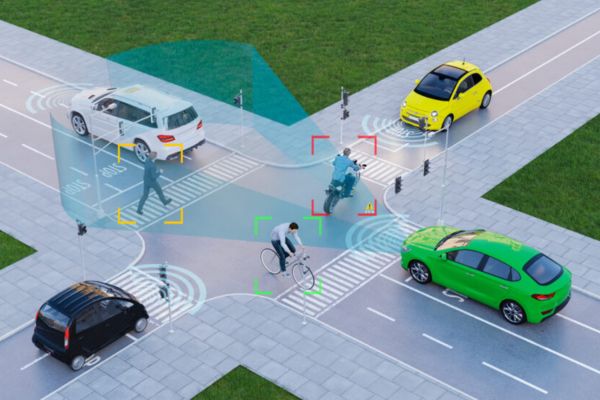The integration of artificial intelligence (AI) into vehicles has revolutionized the driving experience, enhancing convenience, safety, and entertainment. One of the most transformative developments in this space is the rise of in-vehicle AI robots, which are reshaping family road trips. These advanced systems, equipped with natural language processing, machine learning, and real-time data analytics, are turning long journeys into personalized, interactive, and stress-free experiences. From intelligent navigation to passenger entertainment and safety monitoring, AI-powered vehicle assistants are redefining the way families travel. According to the Consegic Business Intelligence report, In-Vehicle AI Robot Market Size is estimated to reach over USD 262.60 Million by 2032 from a value of USD 75.56 Million in 2024 and is projected to grow by USD 87.63 Million in 2025, growing at a CAGR of 14.7% from 2025 to 2032.
Smart Navigation and Predictive Route Optimization :
Traditional GPS systems have evolved significantly with AI integration, offering more than just turn-by-turn directions. AI-powered in-vehicle robots use real-time traffic data, weather conditions, and driver preferences to optimize routes dynamically. Unlike standard navigation systems, these AI assistants predict traffic congestion, suggest alternate scenic routes, and adjust travel plans based on real-time conditions.
For family road trips, this means a smoother, more efficient journey with fewer unexpected delays. AI robots can also factor in stops for rest breaks, fuel, or nearby attractions, tailoring recommendations to suit the preferences of all passengers. Parents can set preferences for kid-friendly locations, such as amusement parks, roadside attractions, or family-friendly dining options, ensuring an engaging and enjoyable trip.
Enhanced Passenger Interaction and Personalized Entertainment :
Keeping children and passengers engaged on long trips has traditionally been a challenge, but AI robots are making entertainment more interactive and immersive. These systems integrate with in-car infotainment setups, offering personalized music, podcasts, audiobooks, and movies based on user preferences. AI-powered voice assistants can suggest content based on past selections, making recommendations that keep passengers entertained throughout the journey.
Some advanced AI systems incorporate augmented reality (AR) and interactive gaming, allowing children to engage with virtual landscapes that sync with the vehicle’s surroundings. For example, an AI assistant could turn a regular road trip into an educational adventure by providing historical facts or fun trivia about locations the vehicle is passing through. This level of interactivity transforms passive screen time into an engaging, learning-focused experience.
Furthermore, AI robots can facilitate voice-controlled interactions, enabling passengers to ask questions, request jokes, or even play interactive storytelling games. By leveraging generative AI models, these assistants can craft personalized bedtime stories or creative games to keep young travellers entertained while on the road.
AI-Driven Safety and Driver Assistance :
Safety is a top priority on family road trips, and AI-powered in-vehicle robots are enhancing vehicle security and driver awareness. These systems utilize advanced driver monitoring technology, assessing signs of fatigue, distraction, or drowsiness in real-time. AI-driven cameras and sensors track driver behaviour and issue alerts if they detect inattentiveness, recommending rest stops when necessary.
In addition, AI-enhanced co-pilots assist with advanced driver-assistance systems (ADAS), such as adaptive cruise control, lane-keeping assistance, and collision avoidance. These features provide an added layer of security, reducing the likelihood of accidents and ensuring a safer journey for families.
Beyond the driver, AI robots can monitor the well-being of passengers, especially young children. Sensors can detect irregular breathing patterns, unusual movement, or signs of distress in car seats, triggering alerts to notify parents. Some AI systems are even equipped with temperature monitoring and climate control adjustments, ensuring optimal comfort for infants and toddlers.
Seamless Connectivity and Smart Home Integration :
AI-powered in-vehicle robots are not just confined to the car—they seamlessly integrate with smart home ecosystems, allowing travellers to stay connected even while on the road. Families can control smart home devices remotely using voice commands, adjusting thermostat settings, turning lights on or off, or even checking security cameras while away.
Moreover, AI robots can sync with cloud-based personal assistants, ensuring that calendars, reminders, and schedules remain up to date. Parents can use the in-vehicle AI to manage travel itineraries, make restaurant reservations, or schedule hotel check-ins while driving, making family road trips more organized and efficient.
Conclusion :
In-vehicle AI robots are redefining the family road trip experience by making journeys smarter, safer, and more enjoyable. From intelligent navigation and personalized entertainment to enhanced safety monitoring and seamless connectivity, these AI-driven systems are transforming the way families travel. As advancements in AI and machine learning continue, the future of road trips will become even more interactive, efficient, and tailored to passenger needs. With AI-powered co-pilots at the wheel, families can enjoy stress-free adventures, creating lasting memories with every journey.
Source : In-Vehicle AI Robot Market

















